Best Tools To Cut Tree Branches In 2024 | Our Top 10 Picks

by Carl Anderson
Updated: December 3, 2023
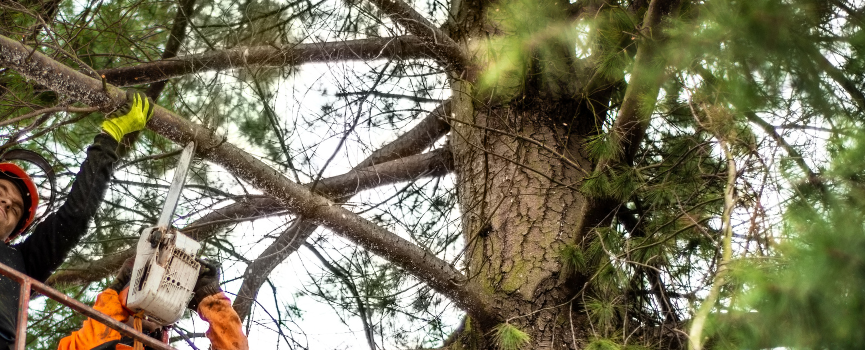
Cutting tree branches can be a difficult task with the wrong tools.
If you have a hefty trimming job on your property, don't go out there with pruning shears.
Seriously, have you ever seen an arborist cut down a tree with just pruning shears or loppers?
Seriously, have you ever seen an arborist cut down a tree with just pruning shears or loppers?
No.
At least not one who is efficient.
You need something much more powerful than simple hand tools.
We cover all the best tools for cutting tree branches down below.
Table of Contents
How To Choose The Best Tool For Cutting Tree Branches
Okay, before we go through the tools, you need to figure out what you actually need to do.
Use the table below as a general guide for what tool you should use to cut those pesky tree branches haunting your property.
| Branch Size | Tool |
|---|---|
| Large Branches | Chainsaws, Pruning Saws, Pole Saws |
| Medium Branches | Chainsaws, Pruning Saws, Loppers, Axes |
| Small Branches | Mini chainsaws, Pruning Shears, Hatchets |
So with that in mind, there are a few other things to consider if you need to trim trees. There is more you need to think about before picking out a tool:
- Why Are You Cutting Branches: Before you start hacking away at your beloved tree, you need to have a reason why. Is it for the tree's health? Is it over the property line? Is it for aesthetics? Be clear in your mind before you buy a tool.
- Your Ability Level: If you've never used a chainsaw before, do you think you are the best person to use a chainsaw? No. Might be worth calling a professional if the job seems out of reach for your abilities.
- Branch Size: The size of the branch will be key in your decision. Cutting down small branches or just pruning the fruit of the tree is going to require much less than a larger branch or even an entire tree.
- Electric vs. Manual: Electric tools can get the job done quickly but they can have more headaches than manual tools. If you have a big or commercial, electric is the way, but if you are a hobbyist gardener, you may want manual.
Now that we know what to look for, let's talk about the best tools for cutting branches... Keep reading below...
The Best Tools For Cutting Tree Branches
1. Chainsaws
Chainsaws are without a doubt the best tool for cutting large tree branches. These are heavy-duty, durable cutting tools meant for felling large trees and branches.
With all that power, they also carry a certain level of risk that other tools don't.
Chainsaws need to be used correctly or you risk injuring yourself or damaging the chainsaw.
RELATED: Best Chainsaws For Cutting Trees
And not only that, but if you don't use it right, it won't cut effectively.
They come in all shapes and sizes so you can pretty much cut any tree large tree branches that exist.
Types of Chainsaws
There are gas, electric and battery-powered chainsaws. Whichever one you pick will depend on your needs, and on your budget. These things get pricey.
Gas Powered Chainsaws
If you want true power, you need to go with gas. These were meant to cut through any tree imaginable and they are built to last.
Gas chainsaws can cut through the toughest trees and they operate much longer than their counterparts. For some, the gas can get overbearing, and since these are a bit heavier, some might find more comfort with an electric saw.
Electric Powered Chainsaws
Electric saws are awesome to have if you want to use cleaner energy and make less noise. Not only that but electric chainsaws are typically lighter than their gas counterparts.
What sucks about electric chainsaws is that they need an extension cord to get anywhere useful. Can't imagine an arborist using this up in a tree but for jobs near a house, they are quite useful.
Battery-Powered Chainsaws
Battery powered chainsaws are your go to for small jobs around the house. They are usually lower in price, and they are much easier to transport than any other saw.
The amount of time you can use them for will depend on the battery used in the saw. These are generally weaker tools so don't plan on cutting through anything too tough.
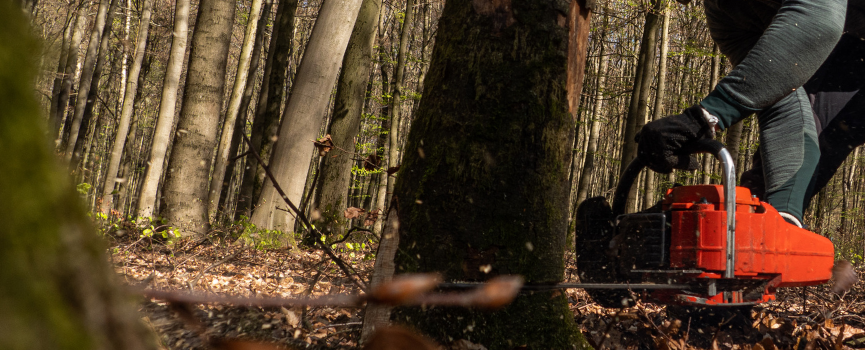
There are so many different chainsaw bar sizes that we put together a table so you can know what your options are:
| Bar Size (Inches) | Job |
|---|---|
| 4-6 | Felling small trees, trimming, pruning |
| 10-14 | Limbing, trimming, pruning |
| 14-16 | Small trees, thick branches |
| 16-20 | Medium-sized trees |
| 20-24 | Heavy-duty trees, logging, for pros only |
We almost forgot to mention that chainsaw engines come in different sizes too. Chainsaw engines can range anywhere from 32 cc to 62 cc. When it comes to buying a chainsaw, you need to do a lot of research.
2. Pruning Saws
Pruning saws are the second best option for cutting trees. And most people don't actually realize how great a pruning saw is for clearing deadwood, trimming branches and for bushcraft.
You can get pruning saws in either manual or electric. But for us, if we wanted a more powerful saw that is either electric or gas powered, we'd just get a chainsaw.
Pruning saws are different. You carry them on your person, and you go around and saw trees as you see fit. One of the best brands of pruning saws out is Silky. They make some absolutely stunning pruning saws.
If you are interested we did a full review on the Silky Big Boy Professional Pruning Saw.
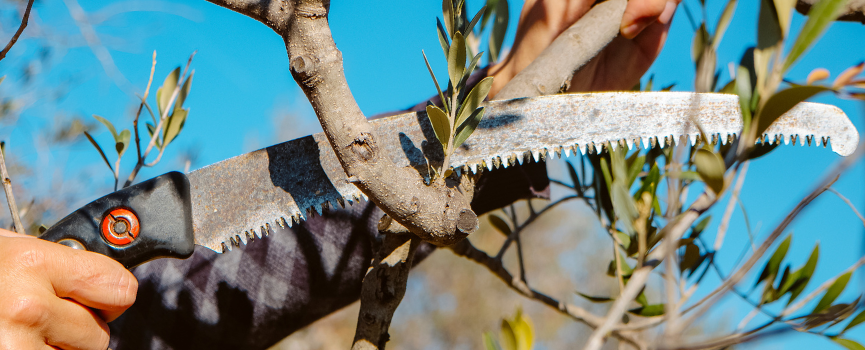
Pruning saws are essentially the hand saws of bush craft. You can get them with a straight or curved pruning blade, and you can decide if you want a fixed blade or a folding hand saw.
The pruning saw is one of our favorite tools because they are so reliable.
You don't need gas. You don't need batteries or extension cords. All you need is your own strength and the blade and you can cut through some pretty large branches.
3. Pole Saws
Pole Saws made it to the Top 3 for one reason and one reason only: you can cut branches without getting on a ladder.
If you are afraid of heights, then pole saws are the way to go. They can extend over 10 feet long so that you can cut tree branches from the safety of your lawn.
Pole saws are min chainsaws on the end of a pole. Some of then extend as much as 10 or 15 feet which is great for cutting high up branches without needing a ladder.
RELATED: How To Use A Pole Saw
Really no complaints when it comes to pole saws but if you have bad shoulders then be careful. It can be tiring holding a pole saw at length for a long duration of time.
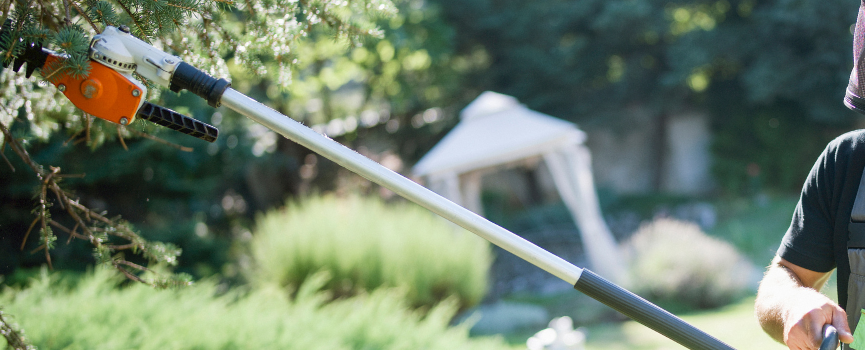
There are three types of pole saws: electric, gas and manual. Let's cover all three so you can make the right decision for your work.
- Electric Pole saws: Best option for most home owners. Easy, lightweight tools that can up up to 15 feet high over 8 inches in diameter.
- Gas Pole saws: Heavier alternative to the electric pole saw. Better suited to those who hate extension cords. Can cut through large branches over 12 feet tall.
- Manual Pole saws:
Can be physically exhausting but you don't need gas or electricity to use them. Just raw spirit. Best for small branches.
4. Loppers
Loppers are the tried and true old fashioned way for cutting branches. These are the ultimate manual way to trim trees.
Unfortunately, with loppers, you aren't cutting anything too much bigger than 4 to 6 inches.. if that. In fact, that might be stretching it.
RELATED: Hoss Loppers Review
If the branch doesn't fit between the two blades of your loppers, you are going to need a bigger tool. But when it does, the two lopper handles give great leverage for lopping through branches.
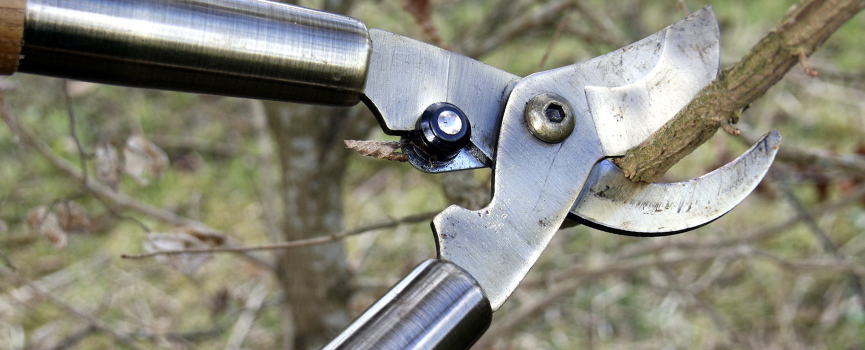
5. Axes
Axes are a bit old school. There are so many high tech options today that we forget our ancestors used axes to fell trees and cut branches.
Even though they aren't used as much as chainsaws these days, it doesn't make them any lest awesome for cutting branches. You can use these for all tree sizes and branches, but if you start cutting down two foot in diameter branches, you are going to get one heck of a workout.
RELATED: Best Axes For Chopping Trees
Chopping a tree with an axe properly with the right technique takes a lot of skill. It's much more involved than running a pruning saw back and forth on a branch. Make sure you do your own research before you bring an axe out into the woods.
If axes are used for anything today, it's mainly for chopping up firewood. And that's as good a past time as any.
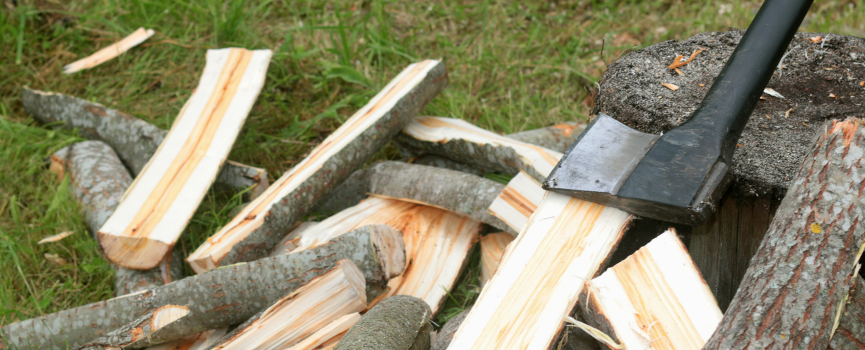
6. Hatchets
Everyone knows that when it comes to trees, you need a hatchet. Is that because they are the best tool for the job?
No. But they are awesome, and actually quite effective for smaller branches or firewood. Hatchets are great because you really only need one hand to swing them.
Again, you won't be cutting anything major with these but they can assist your axe when it comes to chopping firewood for the fireplace.
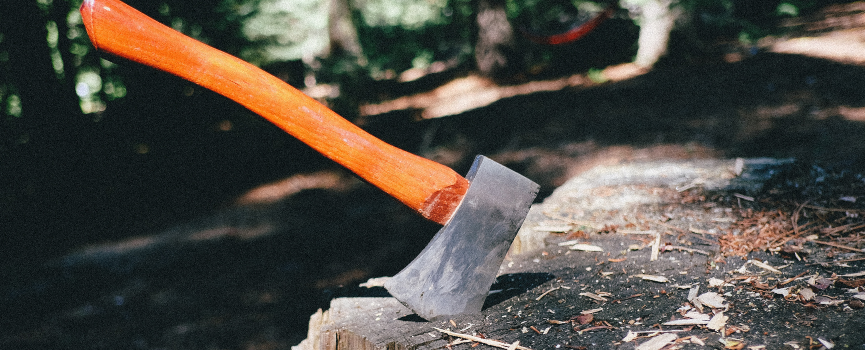
7. Pruning Shears
Pruning shears are great little tools for the smallest pruning jobs. Instead of cutting tree branches, think cutting fruit off of trees.
They are perfect for cutting stems, and anything up to 2 inches in diameter. But beyond that, you should get something bigger otherwise you'll just be fighting with the branch.
These aren't the best tool for cutting tree branches, and that's why they are last on the list. But they are great for pruning off fruits or vegetables, and trimming the smallest branches or stems on a small sapling or plant.
There are tons of different types of pruning shears. You can choose between bypass or anvil pruning shears. There are hedge shears, and then there are snips.
4 More Things to Consider Before Buying Branch Cutting Tools
Four things to consider before buying any tree trimming tool are the size of the tree branches, the height of the tree branches, the blade quality, and the weight and diameter of the tree branches.
Trees come in all different shapes, sizes, colors, and locations. Each tree can have different size branches that require different tools for the job, Doesn't matter if you are cutting oak trees in Maine or pine trees in Illinois.
Branches will be branches.
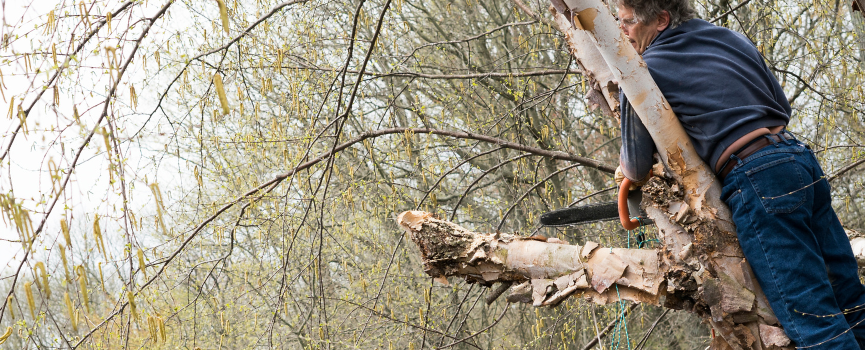
Branch Size - Small, Medium or Large
Small Cutting/Pruning
Small cutting or pruning isn't going to require a chainsaw. But if you have a small trim job to complete, or you are harvesting some fruits off the tree, you can't go wrong with pruning shears or anvil shears.
Most shears are designed to cut branches in the range of 3/4" to 1.5". If that's the diameter branch you expect to cut, then those are your go to tools.
Medium Cutting
Medium cutting would do well with something bigger than loppers or shears. If you are pushing above 6", then a folding pruning saw or pole saw might be the better option.
As a rule of thumb, if you look at a branch and you wonder if you can cut that with scissors, you probably need a saw.
Large Cutting
Larger branches would need some sort of saw be it an electric pole saw or chainsaw. Anything over 5" needs a heavy duty tool unless you want to be sawing branches for an entire day.
Chainsaws come in all different shapes and sizes, and they come as gas, electric, or both. Normally people cutting this size branch are professionals and professionals need elite tools.
Branch Height
If you want to trim tree branches that are over 6 ft up, you may want to consider a pole saw. Only professionals should actually climb trees to trim branches.
The rest of us should consider buying something like an electric pole saw or manual pole saw.
Blade Quality
Blade quality is an important thing to consider before buying a pruning sheer. Forged carbon steel blades last longer and cut through branches quick.
You also want to purchase one that prevents sap from rusting be it a certain coating on the blade or a sap guard. Keep you blades safe from the formidable tree goop.
Weight & Diameter
Cutting trees all day can be tiring. You need a tool you don't need to worry about that is lightweight and won't cause stress or fatigue your limbs.
If you are working far out away from your garage or shed, then you should take the weight into account. The diameter of the tree branch you need to cut will dictate the exact tool you need.
How To Trim Tree Branches
Trimming branches is an extensive process that we plan on going in-depth on in the near future.
For now, check out some of our guides on what to do if you over-trimmed or badly pruned a tree.
Who Needs Automatic Tools For Cutting Trees
Runtime and power are the two most important things to consider when it comes to automatic tools because let's face it, most automatic tools can cut through full trees. If cutting trees is your day job, then you probably have some automatic tools. If not, you might need them.
Remember. Gas-powered tools are an excellent way to cut trees but they may not be as environmentally friendly. Electric-powered tools are less powerful but perhaps better for the environment.
Pay attention to the lubrication system on the chain. If you are out doing heavy jobs, you need to keep the chain moving. Automatic cutting tools require a lot more maintenance than manual tools.
Staying Safe While Trimming Trees
To stay safe when cutting thick branches, be sure to buy an electric or manual saw that not only has good ergonomics, but also weighs light enough for you to carry for long periods, and has a safety mechanism to prevent accidental movement. Additionally, you should be sure to wear safety glasses whenever you cut.
Our Final Choice for Best Branch Cutting Tool
When it comes to cutting tree branches, the best tool is a chainsaw. How do we know? When is the last time you saw an arborist without a chainsaw.
They have tree trimming and tree removal down to a science. And we should follow in their suite.
FAQs

Carl Anderson is the main author of Sweet New Earth. He is an avid outdoors enthusiast who loves gardening. He spends his time reading, hiking and learning about new ways to optimize his garden. You can learn more about him here.
Subscribe Today!
Get the latest deals, discounts, reviews and giveaways!
